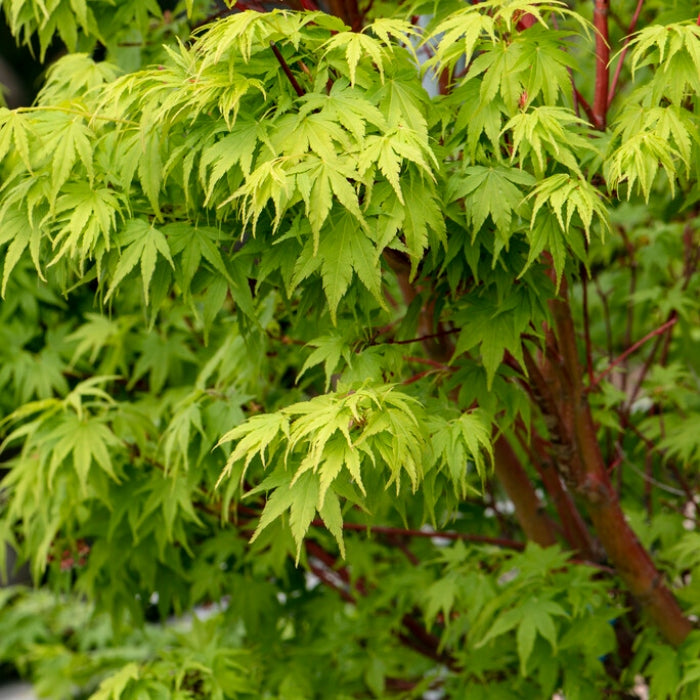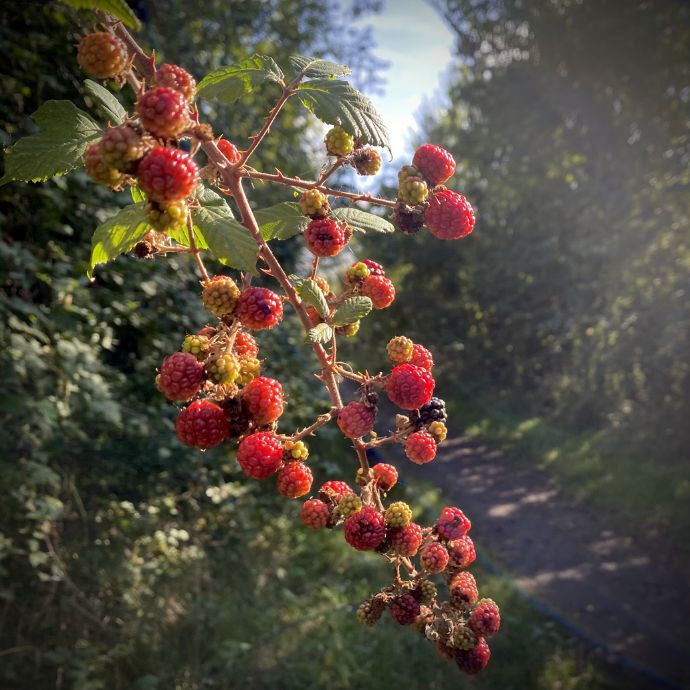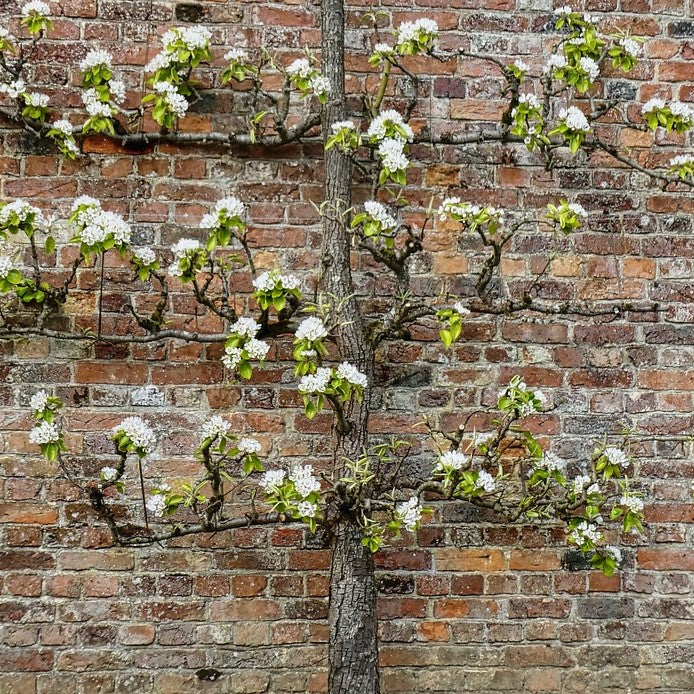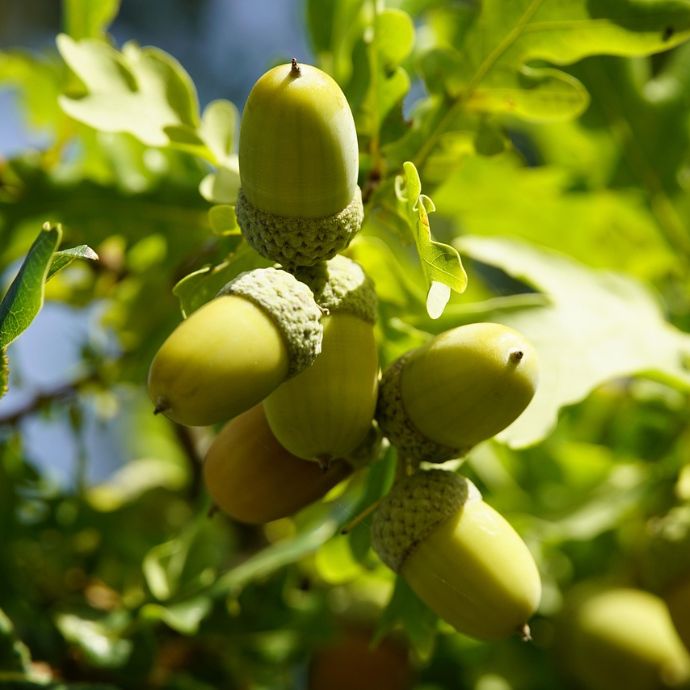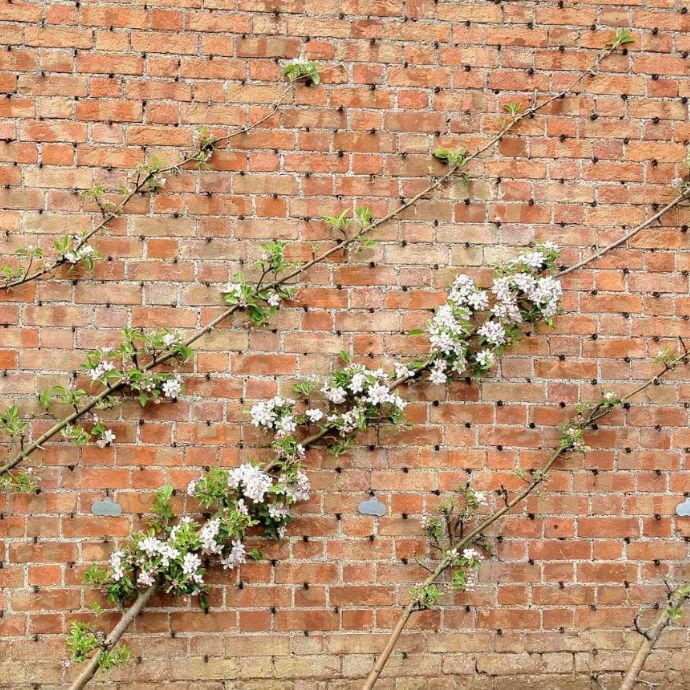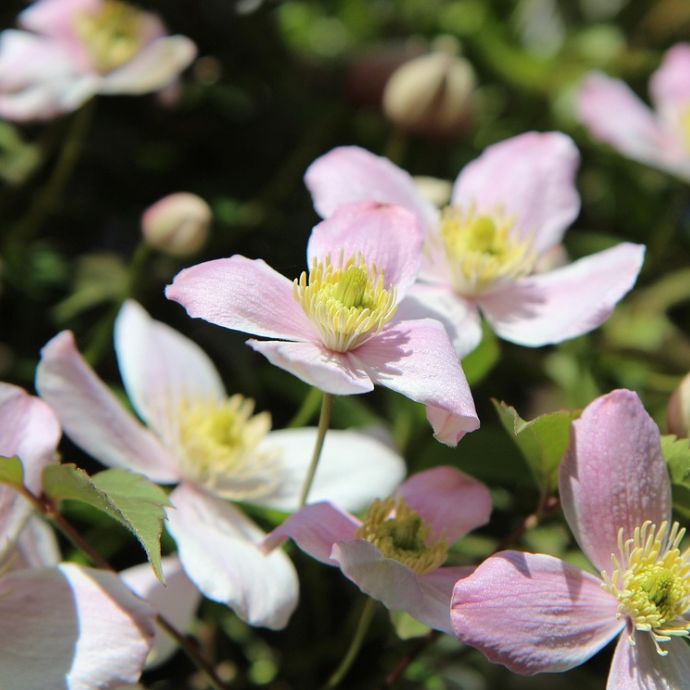Growing Cauliflower: The Complete Guide
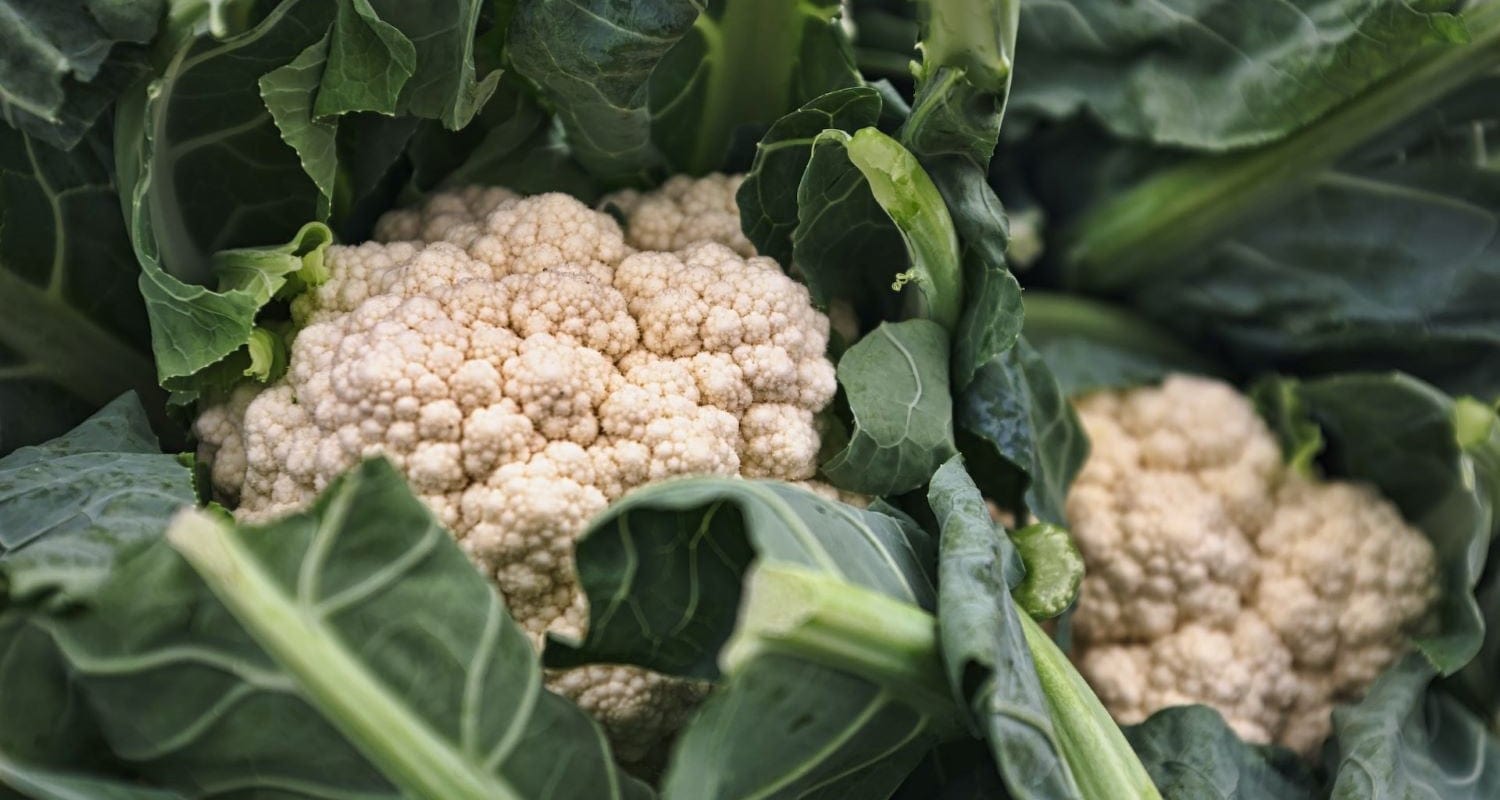
Cauliflower is one of the most versatile vegetables in the kitchen (as well as the tastiest) so to ensure a ready supply of the freshest caulis going, why not grow your own? It’s not the easiest vegetable to grow, but this guide, compiled from our growers’ best advice, will help you grow cauliflowers successfully and avoid common problems.
Jump to:
- Which cauliflower?
- Growing from seed
- When to plant
- Where to plant
- How to plant
- Growing in pots
- Companion plants
- Cauliflower plant care
- Harvesting and storing
- Crop rotation
- Problem solving
Which cauliflower plants to grow?
Most cauliflowers you can grow will be the familiar white headed type, but if you’re feeling adventurous (or want to win instagram), you could have a go at some of the more unusual coloured caulis including purple, orange and green varieties and sprouting cauliflower. They all taste pretty similar, so whichever you choose, you’ll end up with a nicely flavoured crop.
Depending on whether you’re growing in spring or autumn, it’s best to check your seed or plant listing before you buy, to make sure you’re getting the best variety for the season - most can be planted at either time but choosing a more cold-hardy variety is a good idea for autumn plantings. Also if you’ve left it until the last possible moment to plant, choosing an earlier maturing cauliflower is a good move (some sprouting varieties mature in just 33-60 days whereas regular cauliflowers take between 60-100).

How to grow cauliflower from seed
Cauliflower seeds can be sown indoors from October (but be sure to overwinter the plants indoors) to February. Use small pots full of seedling compost or coir pellets, and position them on a sunny windowsill, in a propagator or in a greenhouse. To stagger out your harvest times, you can sow seeds every six weeks. When your plants have three or four true leaves, you can transplant them outside 45-60cm apart or into larger pots if the risk of frost has not yet passed. (This is typically mid-May, but check the dates for your area.)
Alternatively, you can sow the seeds directly outdoors in March and thin them out to 60cm intervals when they reach a height of 5-7cm.
When to plant cauliflowers
Plant out your young cauliflower plants after the last frosts in late spring or early summer for harvests in August or September, or alternatively, plant them in September or October for harvesting by late May. Established cauliflower plants are cold hardy and will stand in the ground throughout winter, but it’s a good idea to cover them with fleece once the heads develop, so that the frost doesn’t damage them.
Where to plant cauliflowers
Cauliflower plants prefer moist, well draining fertile soil which is slightly on the alkaline side. The best soil mix is about three parts compost to one part topsoil, and if you’re really well prepared, add some well rotted manure to the soil the autumn before you start growing. If your soil is more acidic, you can alter the balance by adding some lime. In terms of sun, most varieties do best with a bit of light shade, so try to choose a spot out of direct sun, which isn’t going to get too hot in the middle of a summer day.

Planting cauliflowers
When planting out your cauliflowers, you’ll need to make sure you leave enough space between the plants for the heads to develop fully. Summer and autumn cropping varieties will need 60cm between them, or 75cm for winter cropping varieties. If they’re planted any closer together, you’ll end up with mini cauliflowers that will only feed one person each - not the end of the world, but good to know!
To plant your cauliflower, dig a hole slightly larger than the plant’s roots, place your plant in the centre of the hole and fill it in with soil. Firm it in with your hand, add a brassica collar (see below) to keep off cabbage root fly and add some slow release plant food or manure. It’s really important with cauliflowers to make sure the soil is moist, as dry planting soil can lead to bolting or deformed growth, so make sure you give them a really good watering.

Do cauliflower plants need support?
Cauliflowers have quite a shallow root system, so unless they’re in a very sheltered spot in your garden, they could be at risk of toppling over in strong winds or heavy rain, especially at the point where the heads are almost fully grown. Supporting them with a plant stake or cage can prevent the stems breaking or the heads touching the soil and potentially picking up a soil-borne disease. Carefully push your plant stake into the ground next to your plant, then tie it to the plant stem using a soft plant tie or twine. Alternatively, if you have a good number of plants growing together, you can build a cage around them with garden canes and twine, to keep them all upright.
Growing cauliflowers in containers
Thanks to their shallow roots, cauliflowers can be grown successfully in pots so you can have a few on a balcony or patio. Each plant will need its own pot measuring at least 30cm deep and wide, filled with compost with added nitrogen-rich plant food. Make sure that the pots you use have drainage holes at the bottom to allow water to drain away and not rot the roots. Plant your cauliflower in the pot as above and leave about 5cm of space between the top of the pot and the soil level, to allow for watering. A larger container, such as a half barrel, could hold up to three cauliflower plants.
Companion plants for cauliflower
The best companion plants for brassicas such as cauliflower are those which lure pests - in particular caterpillars - away, such as marigolds and nasturtiums.
Basil, chives, garlic and dill are all strongly scented and although we find them delicious, flies and other insects will keep their distance; planting sage will help to deter the dreaded cabbage root fly.
Growing bee friendly flowering plants near your cauliflowers will also help by attracting the insects you need to pollinate your plants.
Find out more about companion planting.
Cauliflower plant care: watering and feeding
For the best results from your cauliflowers, keep them well watered but not waterlogged (as this could encourage root rot). Consistency is key - if the plants dry out, the heads might not grow properly. Throughout autumn and winter you probably won’t have to bother, but when the weather gets drier in summer and the heads start to form, you should be watering at least once a week. A deep watering is best, to make sure the water reaches the roots.
Brassicas need a fair bit of nitrogen in the soil to grow well, so as well as adding mulch at the planting stage, you should feed them with worm castings, chicken manure pellets or coffee grounds, then repeat this every couple of weeks throughout the growing season.

How to stop your cauliflower bolting
One of the pitfalls of growing cauliflowers is bolting - this is when the flower buds that make up the head separate and start blooming - you can even get a flower stem growing in the middle. The cause of bolting is usually fluctuating temperatures, for instance when you get a cold snap followed by warm weather. Once it happens you’re sunk - a cauliflower plant only produces one head and bolted heads taste bitter.
To prevent bolting, it’s important to get your fertiliser right - avoid any kind that promises better flower growth, as this is the opposite of what you want. Instead, stick to nitrogen feeds that promote leafy growth.
You can also help to keep the roots cool and moist by laying mulch around your plants, as bolting can be caused by the soil warming up too much.
Finally, make sure your plants have a bit of shade to grow in, rather than full direct sun. Either plant them near tall shrubs and trees or tall crops like corn, or cover them with cloth in the afternoons of very hot days. Similarly, if a frost is forecast, cover them with cloth or fleece overnight.
If you do spot your cauliflower starting to bolt, harvest it straight away - if you catch it early enough you can still eat it before it goes bitter.

Do you need to prune cauliflowers?
There’s no need to prune your cauliflowers, but it is important to keep the ground around them free of weeds, so that your plants get all the nutrients they need.
Harvesting cauliflowers
There’s no hard and fast rule about when to harvest your cauliflower head - when it’s the size you want, cut the main stem with a sharp knife, leaving some of the leaves under it, as they’ll help to keep the head fresh and unbruised until you use it. Don’t wait too long though. Once the head starts to separate or the curds of white varieties turn yellow, the flavour is going to deteriorate fast. If you’re growing mini cauliflowers, they’re best at around the size of a tennis ball. Unlike broccoli, a cauliflower plant doesn’t produce side shoots once the main head is cut, so you can get rid of the plant after harvest.
Storing cauliflowers
Freshly harvested cauliflower will keep for a few days on the kitchen counter before it starts to go limp, so it should always be stored in a fridge. If you have a big harvest and end up with more than you can eat, the florets are great for freezing. Here’s how to keep your cauliflower extra fresh.
Keeping cauliflowers in the fridge
Don’t wash your cauli before it goes in the fridge - this makes it soggy and risks your lovely florets going mouldy. The best part of the fridge to store it is in the salad drawer, but make sure it’s not overcrowded, as poor air circulation can make your veg go off quicker. Stored properly, cauliflower will last up to two weeks in a fridge.
How to freeze cauliflower
First, chop your cauliflower into florets then rinse them in a colander.
You’ll need to blanch your florets before freezing - this simply involves boiling them for two or three minutes, then plunging them into iced water to stop the cooking process.
Put them back in the colander to drain, then pat it dry and arrange the florets on a baking sheet so they’re not touching.
Place the tray of florets into the freezer for an hour or two, then take it out and put the frozen florets into freezer bags or containers.
Your cauliflower will keep in the freezer for up to a year. To keep it nice and crisp, don’t thaw it, just add the frozen cauliflower to whatever you’re cooking. Alternatively, you can freeze cooked cauliflower in a cheese sauce, then pop it into the oven to crisp up when you want it.

Cauliflower crop rotation
If you plan ahead, you can use crop rotation methods to give your cauliflower the best start with a soil full of the nutrients it needs. The best bed to use is one that’s had beans or peas growing in it the previous year. Beans leave a lot of nitrogen in the soil, which brassicas need to grow healthy leaves. The year after you’ve grown your cauliflowers, plant peas and beans again to rebalance the nitrogen that the brassicas used.
Cauliflower problems: common pests and diseases
Like all brassicas, the main problems for cauliflower plants are caterpillars and cabbage root fly, with slugs and birds presenting a mild threat too. The best defence against them is to cover your plants with a fine net or hoops covered in mesh. This will let in the rain and sunlight while protecting your crop from pest damage - companion planting is also a good idea, and you should always keep the ground free from weeds and space your plants well apart to prevent moulds and mildews.
Cabbage root fly
Cabbage root flies look like small, grey house flies. The tiny fiends lay their eggs near the base of brassica plants and the resulting maggots burrow their way into the root system of the plant, feeding on it and causing the plants to wilt, become yellow and even die.
Netting your plants will help to keep them off, and to add extra protection against cabbage root fly you can also use a brassica collar which prevents the flies from laying their eggs at the base of the plant. These look like a small circle of felt or cardboard which you fit around the stalk of the plant - it’s easy and cheap to make your own.
Caterpillars
Aw, so cute, I thought, when I first found them. Behold the wonder of nature! Get the camera out! Don’t be like me. Check under the leaves of the young plants regularly for eggs (especially if you see any cabbage white butterflies in your garden) and wipe them off with a damp cloth (or blast with a hosepipe) if you see any. If any caterpillars have hatched, pick them off ASAP (I use plastic tweezers) and relocate them. Apparently hens like to eat (non-spiky) caterpillars, so you can ‘relocate’ them to your hen house if you keep chickens.
Slugs and snails
Slugs don’t tend to attack established brassica plants (and if they do, the damage is minimal) but you will need to look out for them around younger plants.
The best non-lethal way to keep them away is with a barrier - this can be made of copper wire, which will react with the slug’s mucus to deter them, or crushed eggshells/gravel which they find difficult to cross.
In case of severe slug attacks, wool pellets are a humane and less harmful alternative to the blue chemical slug pellets you can buy, and won’t harm beneficial wildlife such as hedgehogs.
Club root
Cauliflowers can suffer from club root, which affects most brassicas - you may see the leaves wilt and turn purple, and below ground, the roots will have become swollen and bulbous. Club root is caused by an infection so if it strikes, you shouldn’t plant brassicas there again for four years. You can help to prevent club root by ensuring your soil drains well (mixing in some horticultural grit or perlite if it’s too heavy) or making it more alkaline by adding lime or ericaceous compost.
Birds
Birds - especially pigeons - are fond of tearing up young cauliflower seedlings.
The best form of protection against these winged thieves is to cover your crop with fine netting, a brassica cage or horticultural fleece. A scarecrow may offer some help, but I swear these cunning birds are getting smarter every year, so make it realistic.
Last updated: 09/02/2024
